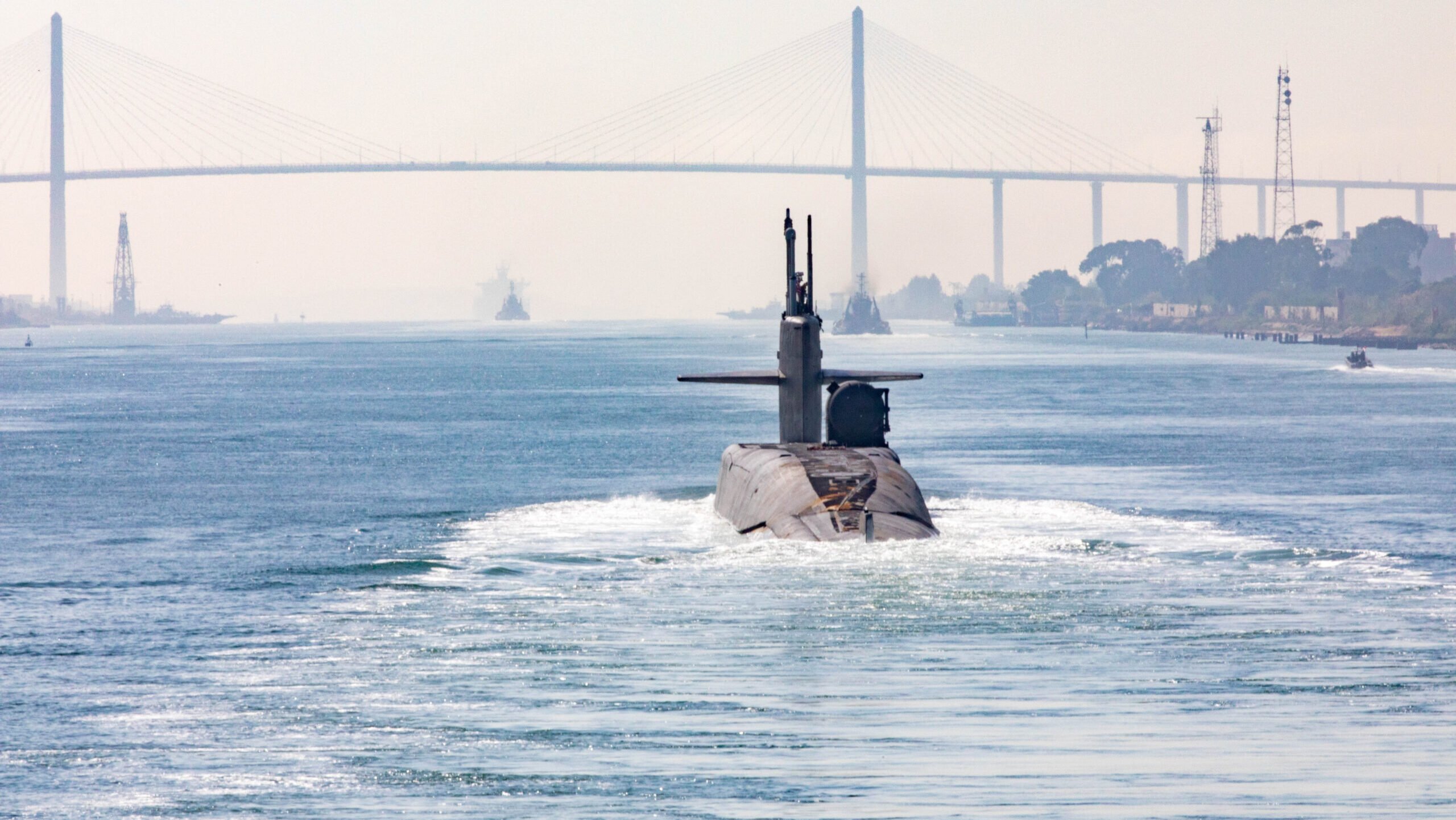
An Ohio-class submarine approaches the Mubarak Peace Bridge while transiting the Suez Canal, Nov. 5, 2023. (U.S. Navy photo by Mass Communication Specialist 1st Class Jonathan Word)
WASHINGTON — The Pentagon may have to take steps to prolong the life of its legacy ballistic missile submarines and intercontinental ballistic missiles due to delays in fielding their replacements, the Defense Department’s top space policy official said today.
The DoD is committed to modernizing its nuclear triad, said John Plumb, assistant secretary of Defense for Space Policy. But with construction of the first Columbia-class submarine at least one year behind schedule and the first flight of Sentinel ICBMs delayed by two years, the department is deliberating how to keep its older Ohio-class submarines and Minuteman III ICBMs ready to respond to a conflict for longer than anticipated.
“So really, the question is, how do you manage what you might call the transition from the legacy systems to modern systems?” he told reporters during a Defense Writers Group roundtable today. “We’re also starting to look at, what are these other force posture changes we might be able to make that don’t break the bank or put too much strain on our nuclear complex that could help address that as well.”
Plumb declined to discuss what specific options are under consideration. However, a service life extension for the Minuteman III program, which was explored by the US Air Force before it committed buying a next-generation replacement, is not on the table, said Plumb, who is set to vacate the space policy job in early May.
The Defense Department is currently conducting an evaluation of the Air Force’s Sentinel program after program costs increased by 37 percent, triggering a Nunn McCurdy breach that will force Defense Secretary Lloyd Austin to certify whether the program can move forward. Northrop Grumman won the Sentinel contract in 2020 and has defended its work, citing overly optimistic early cost estimates by the government and the discovery of complications in the Sentinel plan as it progressed.
Meanwhile, systemic industrial base challenges have dogged Navy shipbuilding efforts, leaving even its largest priority — the Columbia-class built jointly by General Dynamics Electric Boat and Huntington Ingalls Industries — between 12 and 16 months late, according to a Navy review unveiled earlier this month.
That leaves the B-21 bomber, also made by Northrop, as the lone nuclear modernization program that has largely stuck to its schedule — although inflation has driven a $1 billion financial loss on the initial production for which Northrop must pay due to the fixed-price terms of its contract with the Air Force.
In a October 2023 report, a congressional commission on US nuclear posture warned that the Pentagon’s nuclear modernization strategy is built on a “just in time” schedule where legacy systems are retired at the same time new platforms are become operational.
The commission made several recommendations to mitigate shortfalls in capacity that could be caused by modernization delays, such as funding upgrades to Ohio-class submarines to ensure they can operate past the current retirement timeline or — as part of the Minuteman III force structure ages out — spreading existing nuclear warheads to the nuclear platforms that remain operational. However, none are perfect solutions, the commission said.
“Some require significant additional investment and/or near-term decisions to hedge against the problem,” it said. “Others may require potential near-term decisions to be able to field different warhead loads. For example, sustaining the legacy force until its modernized replacement arrives will require additional investment in order to prevent a loss of capability and sustain the U.S. vital nuclear deterrent.”























